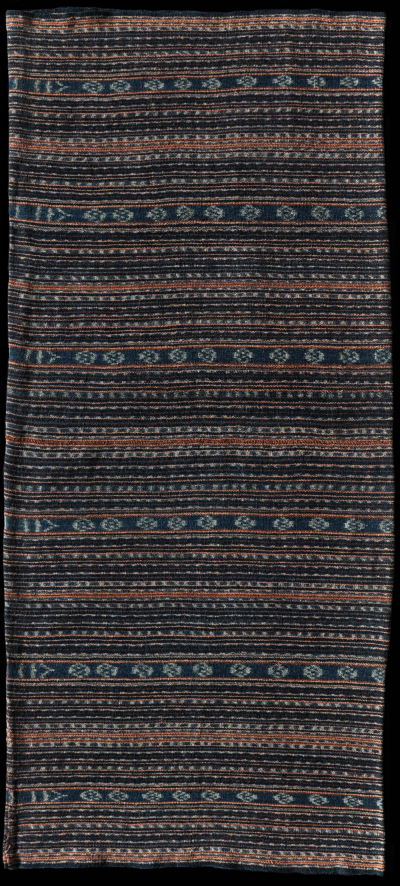| |
 
 | | | |
179 Solor Archipelago, Solor
Kewatek (sarong)  
| | Locale: | Tanalein, on south coast of the island. | | Period: | Ca 1950 | | Yarn: | Cotton, hand-spun, coarse | | Technique: | Warp ikat | | Panels: | 2 | | Size: | 61 x 136 cm (2' 0" x 4' 5") LW: 2.23 | | Weight: | 860 g (30.3 oz), 518 g/m2 (1.70 oz/ft2) | | Design: | Characteristic design of kewatek kemata, bridewealth sarong: numerous stripes and narrow ikated bands; the widest decorated with lozenges in white on indigo containing what looks like swirling swastikas, and basic imitations of tumpal triangles. Some of the stripes, in ochre, maroon and pale indigo, are only one or two threads wide. The finest ikated stripes are three threads wide. The feel of the cloth is somewhat coarse but souple. | | Comment: | Kewatek kemeta, the traditional adat sarong that serves as a formal gift at funerals, and as bridewealth, given by the bride-givers to the bride-takers. The Tanalein region is the most traditional on the island, and while the pattern may be relatively simple, this type of sarong is the most respected and valuable. The kewatek kemeta may of course only be made with hand spun yarn and vegetable dyes. Well made pieces with 'a certain age' are rare, found mostly in museums with older collections, where they are sometimes mislabeled Flores or Larantuka (port in East Flores nearest Solor), as this is where they were collected. Excellent state of preservation. | | Background: | Chapters on Solor Archipelago and Solor. | | Published: | Ikat Textiles of the Indonesian Archipelago, 2018.
| | Compare: | 337 | | Sources: | Nearly identical kewatek kemeta in Khan Majlis, Woven Messages, Fig. 182. | | |

©Peter ten Hoopen, 2025
All rights reserved.
|
|


